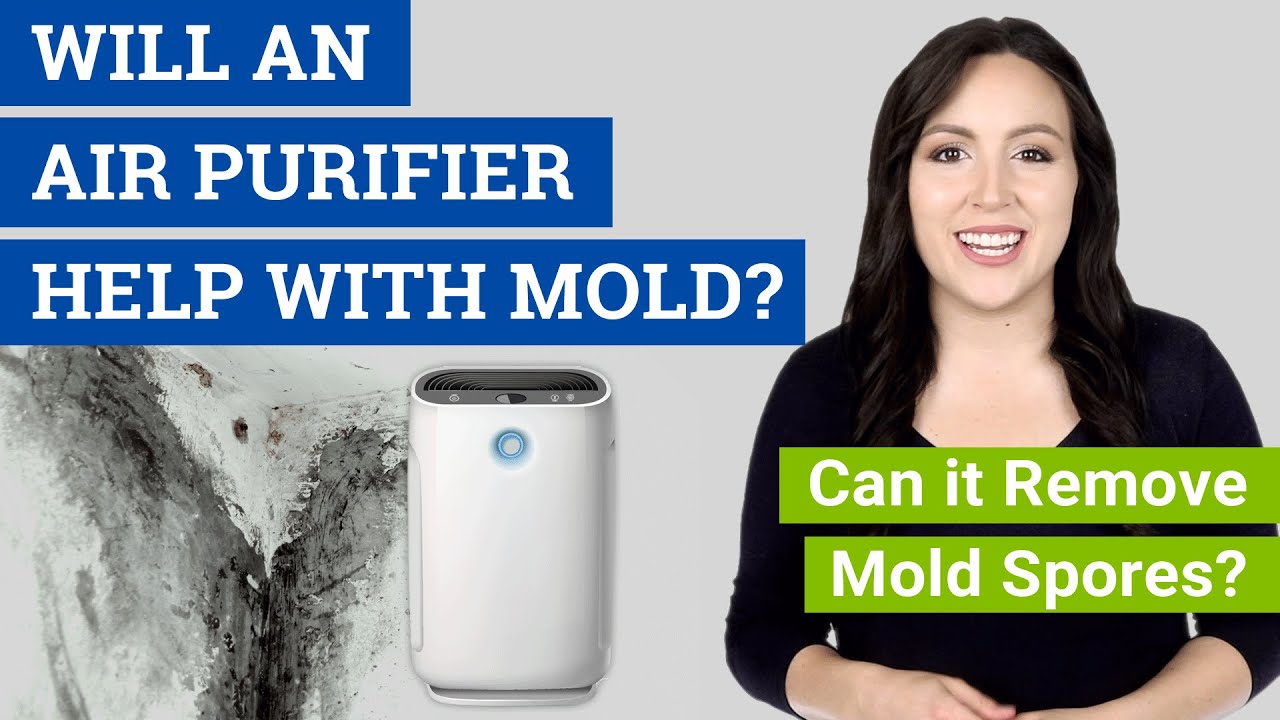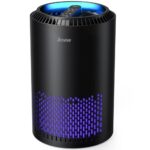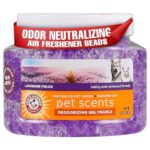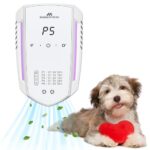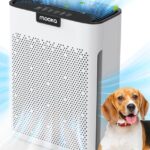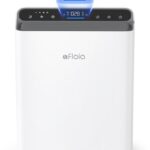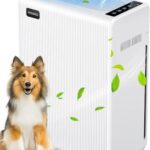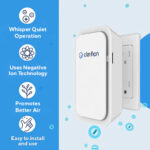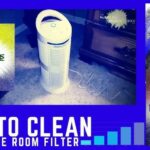Yes, an air purifier can help with mold. It can remove mold spores from the air, making your home healthier.
But, it’s not a complete solution for mold problems. Mold in homes can cause health issues and damage property. It’s important to tackle mold at its source. Air purifiers come in handy by filtering mold spores, reducing their presence in the air.
This makes the air cleaner and safer to breathe. Yet, air purifiers can’t remove mold growing on surfaces. To effectively deal with mold, you need to combine the use of an air purifier with proper cleaning and moisture control. In this post, we’ll explore how air purifiers work, their benefits, and what you need to consider for mold control.

Credit: www.youtube.com
Introduction To Air Purifiers
An air purifier is a device that cleans the air. It removes pollutants and allergens. These devices can filter dust, smoke, and other particles. Some air purifiers use UV light to kill germs and bacteria. Many people use them to improve indoor air quality. They can help those with allergies or asthma breathe easier.
Air purifiers are used in homes and offices. They help remove dust, pollen, and pet dander. This makes the air cleaner and fresher. They also help reduce odors from cooking, pets, or smoke. In some cases, air purifiers can help with mold spores. This is important for people with mold allergies. Using an air purifier can make a big difference in air quality.
Mold: A Common Household Problem
Mold is a type of fungus. It can grow in damp places. Common areas include bathrooms and basements. Mold spreads through tiny spores. These spores float in the air. When they land on wet spots, mold starts growing. Mold can be many colors. Green, black, and white are common. Mold has a musty smell. It can damage your home. Mold can also affect your health.
Mold can cause health problems. Breathing mold spores can make you sick. People with allergies may get itchy eyes or runny noses. Mold can cause asthma attacks. Some types of mold produce toxins. These toxins can cause serious health issues. Children, elderly, and people with weak immune systems are more at risk. It’s important to keep your home mold-free to stay healthy.
How Air Purifiers Work
Air purifiers clean the air in your home. They trap particles like dust and mold spores. This makes the air healthier to breathe. The filter is the key part. It captures and removes contaminants. Some air purifiers also use UV light to kill germs. This helps reduce mold and bacteria in the air.
There are different types of filters. HEPA filters are very common. They trap tiny particles. Activated carbon filters remove odors and gases. UV filters kill germs and mold spores. Some purifiers use a combination of filters. This makes them more effective. Choose a purifier with the right filter for your needs.
:max_bytes(150000):strip_icc()/AirPurifiers_LEVOITAirPurifiersforBedroomHome_HW_353-hires-a50faab8fc554ede9fdb31119c0421fb.jpeg)
Credit: www.health.com
Air Purifiers And Mold Spores
Air purifiers can help reduce mold spores in the air. This makes breathing easier and improves indoor air quality. Choose a purifier with a HEPA filter for best results.
Effectiveness Against Mold
Air purifiers can help with mold spores. They trap these spores in their filters. This reduces mold in your home. Some air purifiers have special filters. These filters kill mold spores. This makes your air cleaner. Breathing becomes easier. Your health improves. You feel better.
Hepa Filters And Mold Spores
HEPA filters are very effective. They trap tiny mold spores. This stops the spores from spreading. HEPA stands for High Efficiency Particulate Air. These filters remove 99.97% of particles. This includes mold spores. Using a HEPA filter is a good choice. It keeps your home mold-free. Your air stays fresh and clean.
Additional Features For Mold Control
UV-C light can help kill mold spores. It breaks down the DNA of mold. This stops mold from growing. Many air purifiers have UV-C light. It works with other filters. Together, they improve air quality. UV-C light is safe to use. It does not harm humans. It is effective in fighting mold.
Activated carbon filters trap odors and chemicals. They remove gases from the air. This helps control mold. Mold often produces a musty smell. Activated carbon filters get rid of this smell. They work well with HEPA filters. Together, they offer better air purification. Activated carbon is essential for clean air. It keeps your home fresh and healthy.
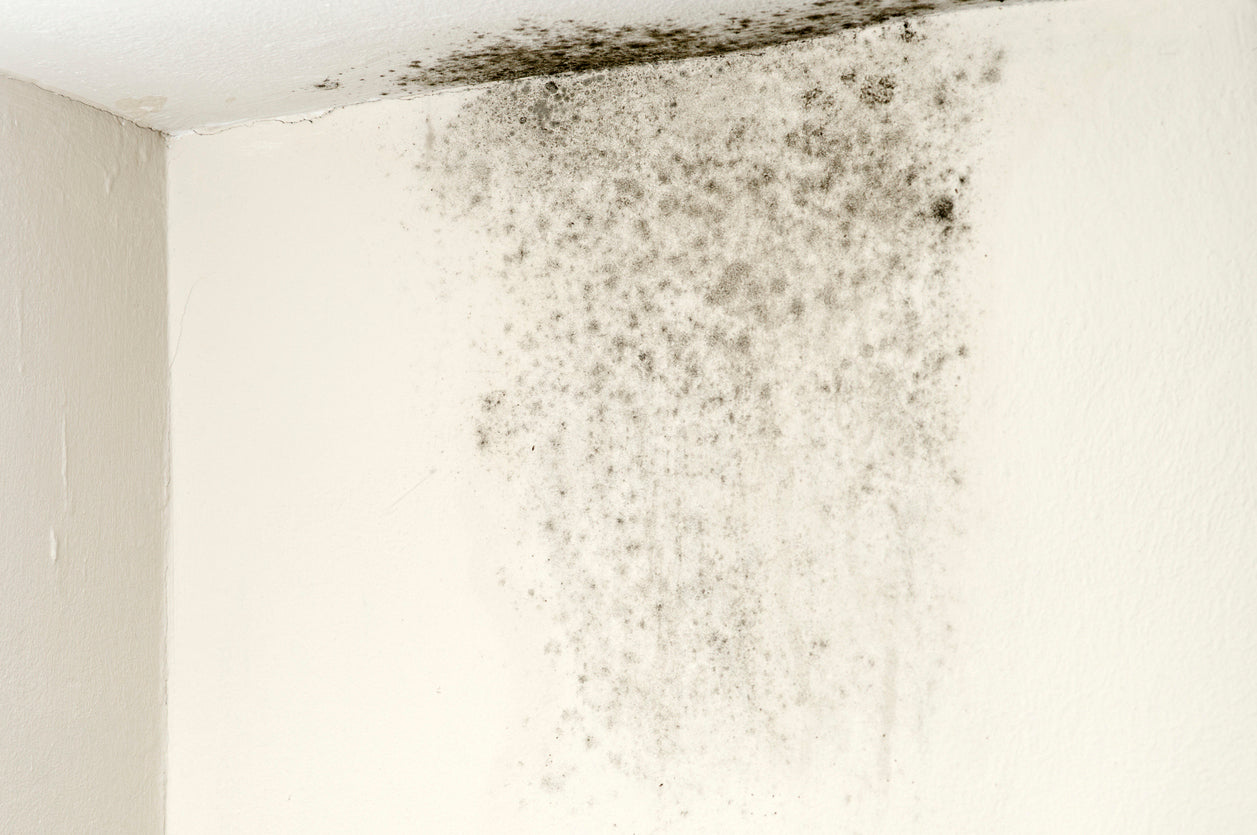
Credit: molekule.com
Choosing The Right Air Purifier
Picking the right air purifier is key. Look for a HEPA filter. It removes tiny particles. Mold spores are tiny. An activated carbon filter helps too. It reduces odors. Mold can smell bad. UV-C light is another feature. It kills mold spores. Check the Clean Air Delivery Rate (CADR). Higher is better. It shows how fast air is cleaned. The right size matters. Match the purifier to your room size. A quiet purifier is nice. Noise can be annoying. Automatic settings are useful. They adjust to air quality.
| Brand | Model | Key Feature |
|---|---|---|
| Dyson | Pure Cool TP04 | HEPA and Carbon Filters |
| Honeywell | HPA300 | High CADR |
| GermGuardian | AC4825 | UV-C Light |
Maintaining Your Air Purifier
Replace filters on a regular schedule. This keeps the air purifier working well. Dirty filters can’t clean air properly. Follow the manufacturer’s guidelines for filter changes. Some filters need replacing every 3 months. Others may last up to a year. Check the filter indicator light if your purifier has one. This helps you know when it’s time to change it. Clean filters help remove mold spores from the air.
Keep the air purifier clean for best performance. Dust and dirt can build up inside. Wipe the exterior with a damp cloth weekly. Vacuum the vents to remove dust. Some purifiers have washable pre-filters. Rinse these under cold water and let them dry. Always turn off and unplug the purifier before cleaning. Clean air purifiers work better at keeping mold away.
Additional Mold Prevention Tips
Keeping humidity levels low is important. Use a dehumidifier to reduce moisture. Aim for humidity below 60%. Higher humidity can cause mold growth. Check your home’s humidity often. Fix leaks quickly. Wet areas can lead to mold. Dry wet areas right away.
Ensure proper ventilation in your home. Open windows to let fresh air in. Use exhaust fans in bathrooms and kitchens. These fans remove moisture. Keep air flowing in your home. Good airflow helps prevent mold. Clean air ducts regularly. Dirty ducts can spread mold spores.
Frequently Asked Questions
How Do Air Purifiers Work Against Mold?
Air purifiers work by trapping mold spores in their filters. HEPA filters are particularly effective. They remove 99. 97% of particles, including mold.
Can Air Purifiers Completely Eliminate Mold?
Air purifiers can reduce mold spores, but they can’t eliminate existing mold. Proper cleaning and moisture control are also necessary.
Are Hepa Filters Effective For Mold?
Yes, HEPA filters are highly effective at capturing mold spores. They can trap particles as small as 0. 3 microns.
Do All Air Purifiers Remove Mold?
Not all air purifiers are designed to remove mold. Look for models with HEPA filters for the best results.
Conclusion
Air purifiers can help with mold by reducing mold spores in the air. They improve air quality and reduce allergy symptoms. Always choose a purifier with a HEPA filter. Regular maintenance and cleaning are essential. Remember, air purifiers are not a complete solution.
Address moisture problems and clean affected areas. Combining air purifiers with other mold prevention methods is best. Keep your home safe and healthy by taking these steps.

